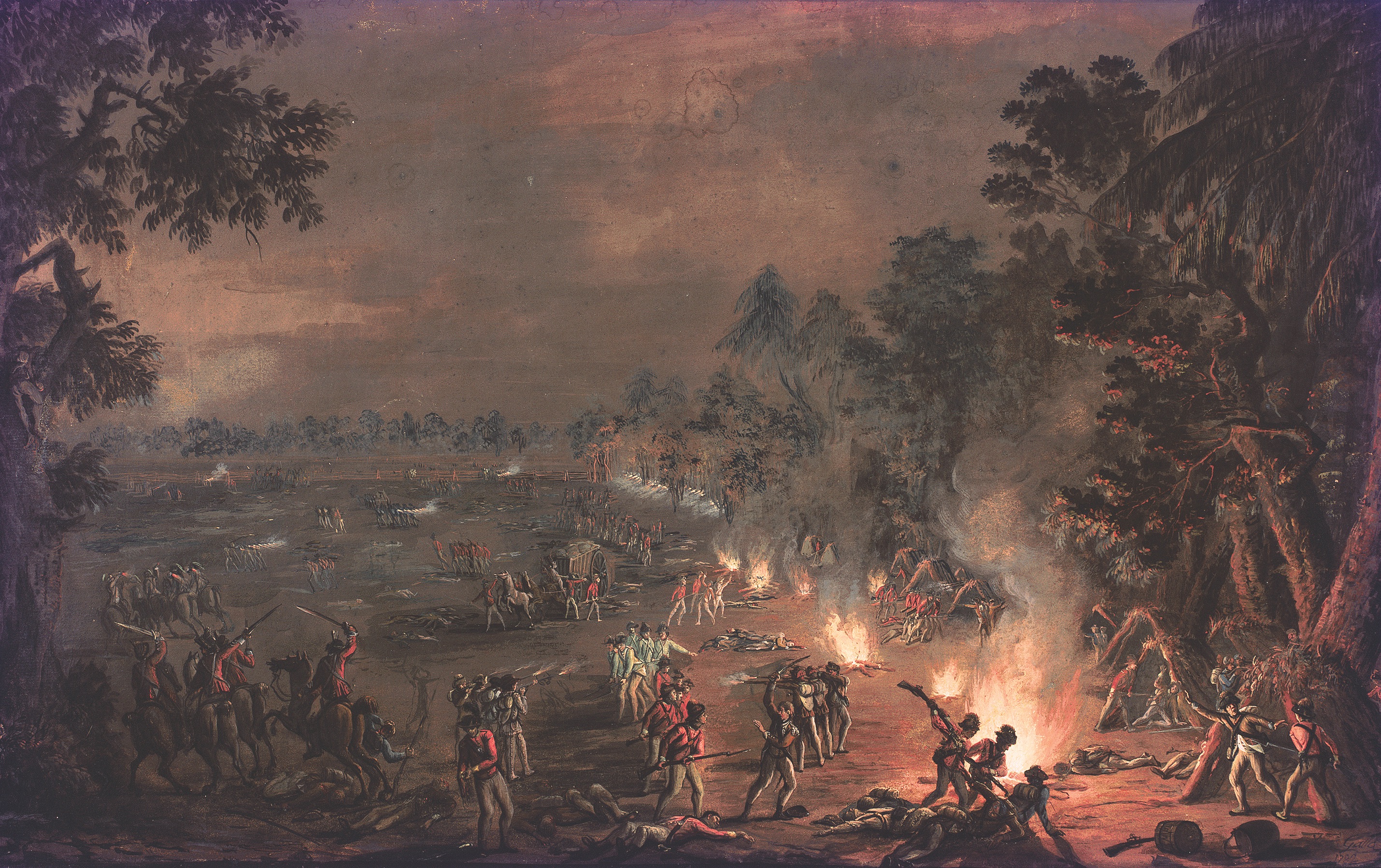In late summer 1777 Gen. Sir William Howe, commander in chief of the British army in North America, sailed from New York City with 15,000 troops in a bid to capture Philadelphia. Moving up the Chesapeake Bay, his fleet landed on August 25 at Head of Elk (near present-day Elkton), Md., some 45 miles southwest of the American capital. After skirmishing with Patriots at Cooch’s Bridge south of Newark, Del., on September 3, Howe approached Brandywine Creek in Pennsylvania on September 11. Opposing him was Gen. George Washington with 11,000 men, many of whom were poorly trained militia. Outflanked by Howe, Washington was forced to retreat east to Chester. The British then pressed American rear elements near Malvern, until a violent nor’easter prematurely ended the clash, aptly dubbed the Battle of the Clouds.
Washington retired to the Continental depot in Reading, Penn., seeking powder and supplies. Meanwhile, nearly impassable roads and the rising waters of the Schuylkill hindered Howe’s progress. To harass the British, Washington left behind 1,500 Regulars with four cannons under Brig. Gen. Anthony Wayne and ordered Brig. Gen. William Smallwood north from Oxford with 2,100 Maryland militiamen. By September 19, Wayne, believing Howe was unaware of his presence, had encamped southwest of Paoli Tavern, within 5 miles of the British. Smallwood’s force was camped a few miles east. But Howe was aware and sent out an 1,800-man assault force, including fearsome Highlanders of the 42nd Foot (aka Black Watch), under Maj. Gen. Charles Grey (father of the namesake of Earl Grey tea).
Late in the evening, on September 20, Grey’s men marched west along Swede’s Ford Road to Admiral Warren Tavern, about a mile north of the American camp. To maintain the element of surprise, the British captured any passersby, including a blacksmith they forced to serve as a guide. At 1 a.m. on September 21, Grey ordered his men to fix bayonets and remove the flints from their muskets to preclude any accidental warning shots, a tactic that earned him the nickname “No Flint.” Approaching undetected through the woods, the British overran the American picketts and poured into Wayne’s sleeping camp.
Lacking bayonets, the surprised Americans were decimated. Wayne sought to cover the retreat of his artillery and supplies, but his orders to Col. Richard Humpton were misunderstood, and more chaos ensued. The British bayoneted the Americans by the dozens and drove the survivors from the field. Wayne joined the exodus west to White Horse Tavern, where he linked up with Smallwood, who also turned tail. Grey suspended any further pursuit.
Wayne lost 53 killed, 113 wounded and 71 captured to Grey’s four killed and seven wounded. Though there was no evidence of improper British conduct, the one-sided nature of the engagement led to its designation by enraged Patriots as the “Paoli Massacre.” Though an Army court of inquiry cleared Wayne of misconduct, it determined he’d made several tactical errors. Known by the sobriquet “Mad Anthony,” a furious Wayne demanded a court-martial and was exonerated. He went on to victory at the 1779 Battle of Stony Point and the postwar defeat of a confederation of Indian tribes at the 1794 Battle of Fallen Timbers in Ohio Country.
While Grey was busy smashing Wayne’s division, Washington assumed a strong defensive position at Swede’s Ford. Howe moved farther north to seek an uncontested crossing site, which he found at Flatland’s Ford on September 23. Interposing his army between Washington and the capital, Howe captured Philadelphia on September 26. The Continental Congress had already fled. While campaigning to recapture the city, Washington was narrowly defeated at Germantown on October 4. After additional failed operations, Washington went into winter quarters at Valley Forge. Following France’s entry into the war in 1778, the British made a strategic withdrawal from Philadelphia. Five years later they were forced to grant the United States its independence.
In 1817 veterans of the late rematch with Britain erected a simple marble monument atop the soldiers’ burial mound at Paoli. Six decades later local citizens replaced it with a larger granite obelisk. Listed on the National Register of Historic Places, the 40-acre park is owned by the borough of Malvern and administered by the Paoli Battlefield Preservation Fund. Present-day Paoli Battlefield Historical Park sadly appears to function more as a dog park than as hallowed ground dedicated to 53 fallen Patriots of the American Revolution.
This feature originally appeared in the May 2020 issue of Military History magazine. To subscribe, click here.





